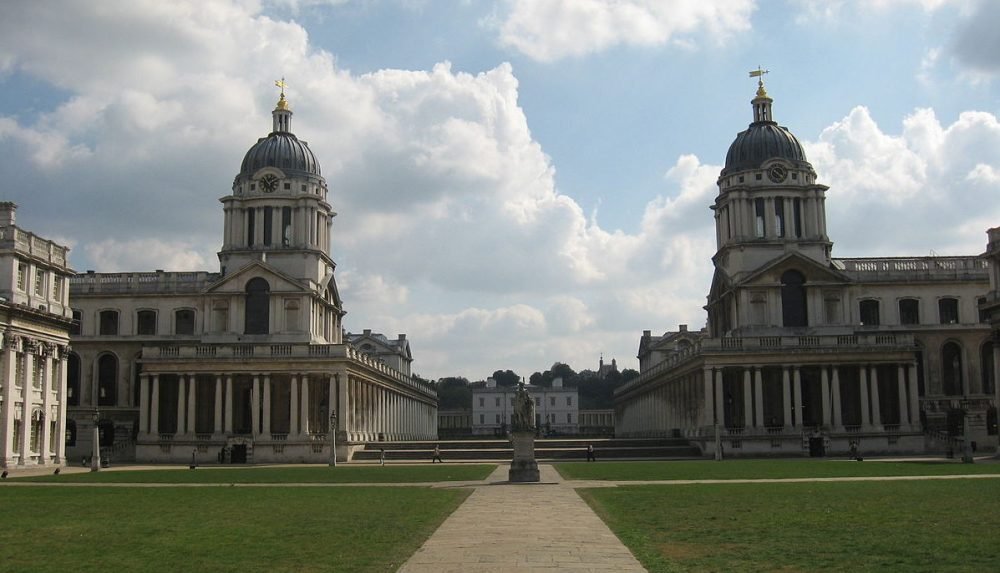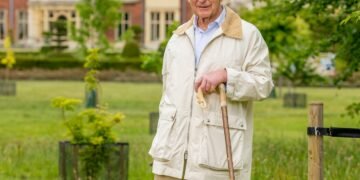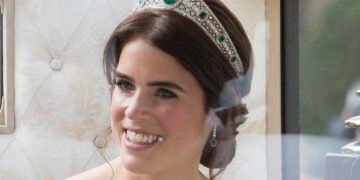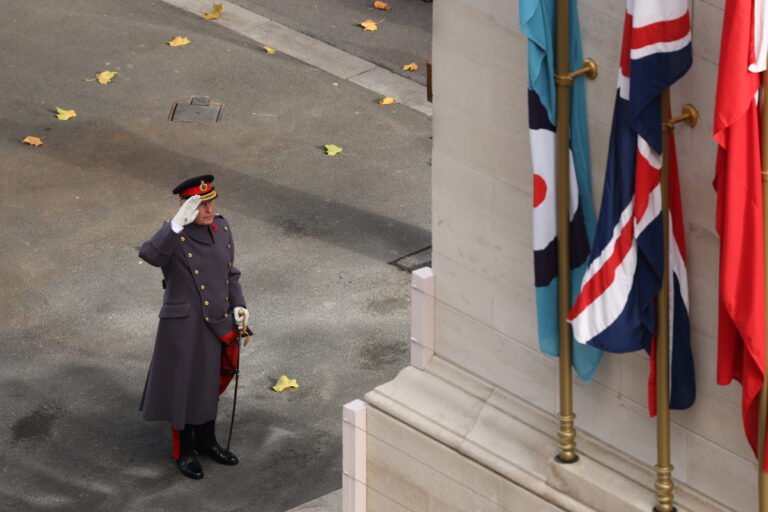Beneath the Painted Hall of the Old Royal Naval College in Greenwich, the birthplace of Henry VIII, Mary I and Elizabeth I has been found: Greenwich Palace.
Evidence of the former royal residence was discovered as conservation work began on the Painted Hall at the college, famous for its ornate Baroque design by Sir James Thornhill.
The plan was to stabilise the foundations of the room, and clean and restore the paintings – which have earned the hall the title of ‘the UK’s Sistine Chapel’ – but workers noticed foundations of walls unrelated to the Painted Hall and glazed tile floors.

Two rooms of the Tudor palace were discovered, thought to be from the service area of the palace. One of the rooms wouuld have been underground, and its unusual niches are believed to be ‘bee boles’ for the keeping of skeps (hive baskets) during the winter months, as the bee colonies hibernate, and for keeping food and drink cool in the summer months when the hives were outside.
“Bee boles have occasionally been found in historic garden walls, but it is very rare to find them internally, making this find even more significant,” explains the Old Royal Naval College’s announcement.

Also known as the Palace of Placentia, the building was comparable to the magnificent Hampton Court Palace, complete with a chapel, gardens, and tiltyard for jousting (including a five-storey viewing tower). It saw not only the births of Henry VIII and his two daughters, but the arrest of Anne Boleyn and his fourth marriage to Anne of Cleeves.
Greenwich Palace was demolished under Charles II, to make way for a more modern residence after it had fallen into disrepair during the Civil War.

Only the east range of the present King Charles Court was completed, before it was demolished and the Royal Hospital for Seamen built on the site in 1694, by Sir Christopher Wren for William III and Mary II. However, the Painted Hall was completed over the course of 19 years in 1726, by Sir James Thornhill.
The naval college opened here in 1873, ceasing its activity in 1997.
In 2006, a full archaeological excavation was completed, unearthing the chapel and vestry. Plans are now underway to attempt to incorporate the new finds into the planned interpretation gallery.
Duncan Wilson, Chief Executive of Historic England said: “This is a really remarkable find. The Tudor period is one which grips the public imagination like no other, probably because of the larger-than-life characters like Henry VIII and Elizabeth I, as well as the magnificence of the buildings.

“To find a trace of Greenwich Palace, arguably the most important of all the Tudor palaces, is hugely exciting. The unusual and enigmatic nature of the structure has given us something to scratch our heads over and research, but it does seem to shine a light on a very poorly known function of the gardens and the royal bees.
“The most exciting aspect is that the Old Royal Naval College is able and willing to incorporate this into the new visitor centre, so everyone can see a small part of the palace, for the first time in hundreds of years.”








